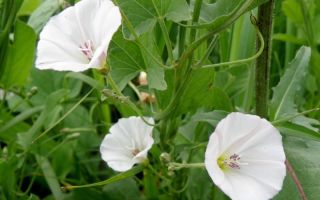Content
It is noteworthy that some herbs, which are weeds, also belong to medicinal plants. For example, the medicinal properties of field bindweed are beyond doubt. Perennial grows in close proximity to crops, hindering their development. Bindweed has been used in folk medicine for many centuries. The weed has an attractive appearance and pleasant aroma.
What it looks like and where it grows
Bindweed is a representative of the genus Liana-like. More than 100 plant varieties have been studied. The most common species is the field bindweed.

Herbaceous perennial is common in the territory:
- Russia (European part);
- The Caucasus;
- The Far East;
- Central Asia;
- Siberia.
Field bindweed is a weed that has many names:
- bell;
- gourd;
- birch;
- birch bark;
- bitterness;
- toffee;
- dodder and snake;
- almond or felt herb;
- gramophone.
The plant is distinguished by a creeping rhizome and curly, long stems reaching 3 m. A dense rosette of bindweed is formed from one of the root necks. The branching root goes into the soil to a rather impressive depth. The green leaves of the birch can be up to 6 cm in length. Their shape usually resembles a heart.
The bindweed flower has medicinal properties. It is distinguished by a pinkish tint and the presence of five dark longitudinal stripes. Bindweed bloom is observed during May-October. The flowers look like funnel-shaped gramophone. They are located on rather long peduncles and are characterized by a pleasant, but not pronounced aroma.
Birch fruits ripen by early autumn. They are represented by a small box with four dark seeds.
Bindweed is a pest that absorbs nutrients and moisture from the soil, inhibiting growth:
- corn;
- oats;
- barley;
- wheat.
The weed can be found in orchards, fields, agricultural uncultivated land, as well as along roadsides and railways. The bindweed is unpretentious to the conditions of its growth. However, the birch tree was also recognized as a medicinal crop. In particular, almond herb infusions and decoctions are used in the following cases:
- liver disease;
- swelling;
- lichen;
- asthma.
Field bindweed chemical composition
The birch tree is rich in substances beneficial to health. Bindweed raw materials contain:
- retinol;
- tocopherol;
- ascorbic acid;
- bitterness;
- alkaloids;
- flavonoids;
- saponins;
- resinous glycosides.
Birch leaves and stems include bitter substances, resinous glycosides, saponins. Bindweed flowers are rich in resins and seeds are rich in fatty oils. The roots are considered a source of resins and tannins. These components determine the beneficial effect of the birch on the body.
Beneficial features
Bindweed began to be used in the Middle Ages. Traditional healers with the help of birch-based products improved the functioning of the stomach, cleansed blood vessels.
As a result of scientific research, the beneficial properties of the garden bindweed have been established:
- elimination of dry eyes and restoration of visual acuity;
- destruction of viruses and harmful microorganisms;
- normalization of sleep;
- strengthening of the vascular wall;
- reducing the risk of pathologies of the heart and blood vessels and the severity of the manifestations of the climacteric period;
- prevention of the development of malignant tumors;
- improvement of intestinal permeability;
- relieving PMS symptoms;
- elimination of toothache and enamel sensitivity.
The following birch effects are indicated:
- anti-inflammatory;
- sedative;
- choleretic;
- diaphoretic;
- hypotensive;
- laxative;
- anesthetic;
- detoxifying;
- wound healing;
- fortifying;
- antineoplastic.
The use of potions from the gourd helps to restore the body with ARVI.
Preparation and application methods
Bindweed is known for its many medicinal properties. On the basis of a medicinal plant, complete potions are made.
Tincture
An alcoholic solution of a birch is taken before meals three times a day, a teaspoon. It produces a mild laxative effect. The gourd herb should be poured with alcohol (in a ratio of 1: 4). The tool is insisted in a dark and dry room for two weeks.
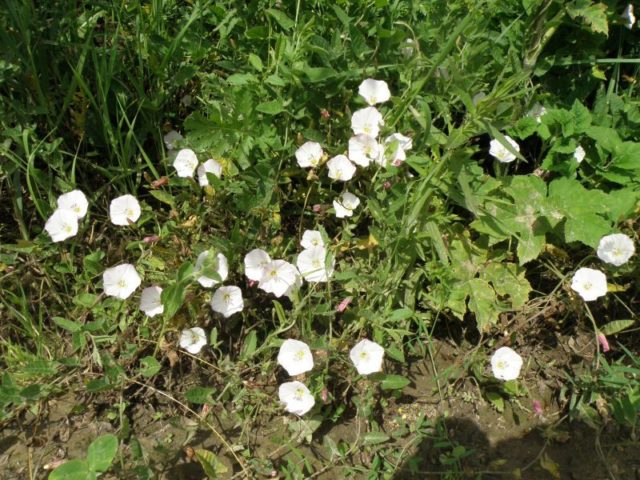
Infusion
An aqueous solution of a birch is made from a fresh plant. Two tablespoons of bindweed herb are crushed and poured into two glasses of boiling water. The product is ready for use in an hour.
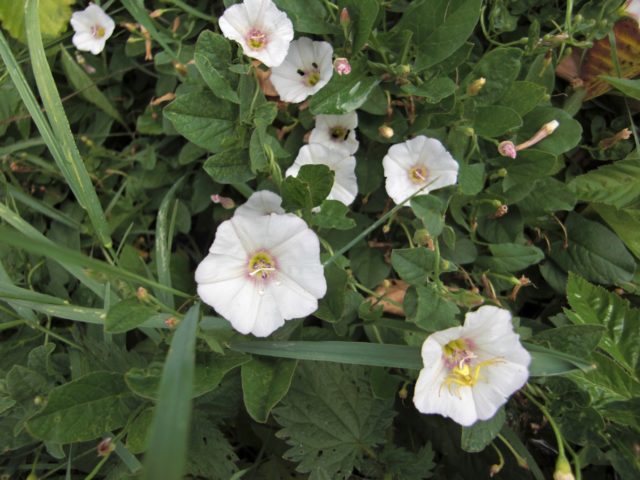
Decoction
The tool has anti-inflammatory effects. Two teaspoons of raw materials (dry gramophone grass) are poured with two glasses of water. The composition is boiled over low heat for 15 minutes, and filtered before use.
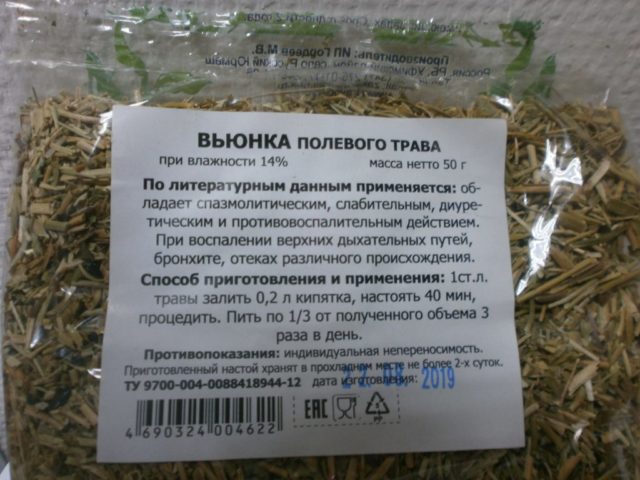
Powder
The dosage form is made on the basis of dried birch roots. Raw bindweed is ground to a powdery mass using a coffee grinder. The finished product is used to treat ulcers, weeping wounds.
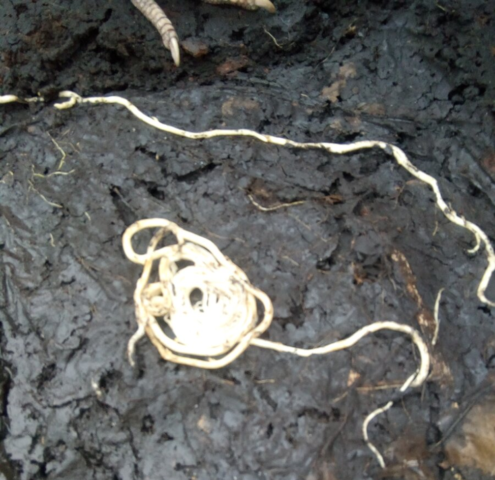
Field bindweed application
Birch is used as a medicinal plant for the treatment or prevention of known pathologies. Healing agents are taken in short courses.
With asthma
To minimize the manifestations of an allergic disease, you can drink a drink made from bindweed. Pour a tablespoon of raw birch trees with a glass of boiling water and leave for an hour. The resulting product is taken in a quarter of a glass four times a day. Reception of a drug from a birch tree is carried out before meals. The therapeutic course is a week.
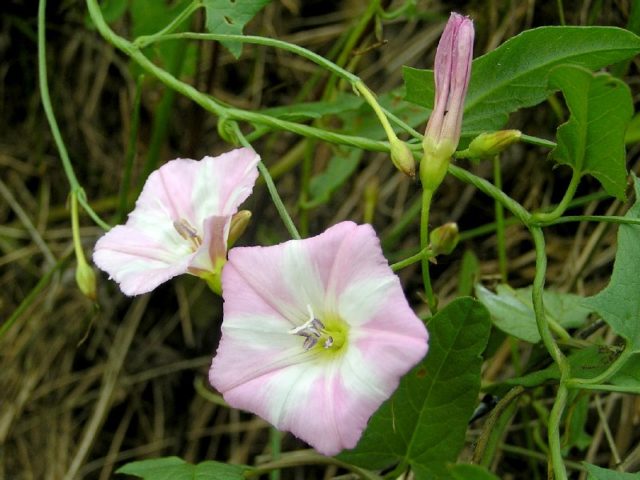
Toothache
A tablespoon of chopped and dry bindweed roots must be poured into a glass of hot boiled water. The dishes are covered and the remedy is infused for 30 minutes. The resulting composition should be filtered before use. The product is used to rinse the oral cavity throughout the day.
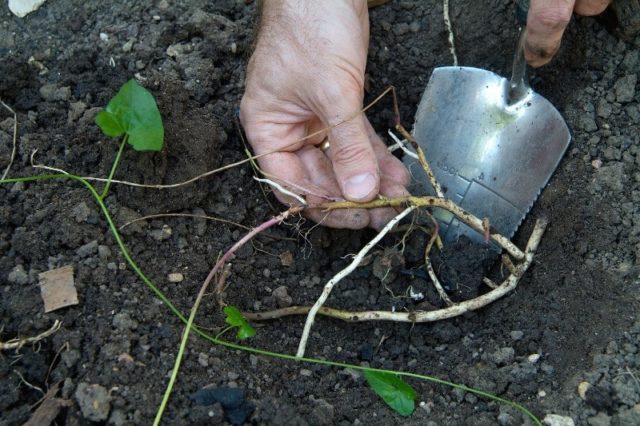
With bronchitis
Pour a tablespoon of dry chopped birch grass with a glass of boiling water. Then the composition is tormented for half an hour in a water bath. The resulting decoction of bindweed must be cooled and filtered. The tool is taken a quarter of an hour before meals three times a day. The dosage is six tablespoons.
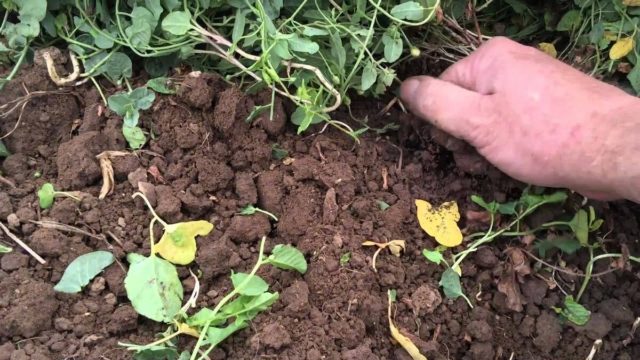
With atherosclerosis
For the treatment of vascular pathologies, it is advisable to take alcohol tincture from a birch tree. The gourd herb (10 g) is poured with 70% alcohol (50 ml). The mixture is infused for a week in a dark place. The resulting product is used before meals three times a day. The dosage is 0.5 teaspoon.
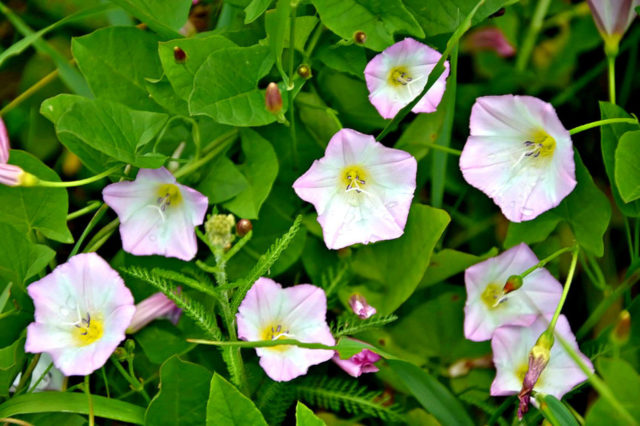
For recovery after childbirth
The broth is prepared in milk (glass), which is poured into a teaspoon of gourd herb. The mixture is simmered over low heat for five minutes. The gramophone broth is filtered and divided into four parts. The tool is used throughout the day.
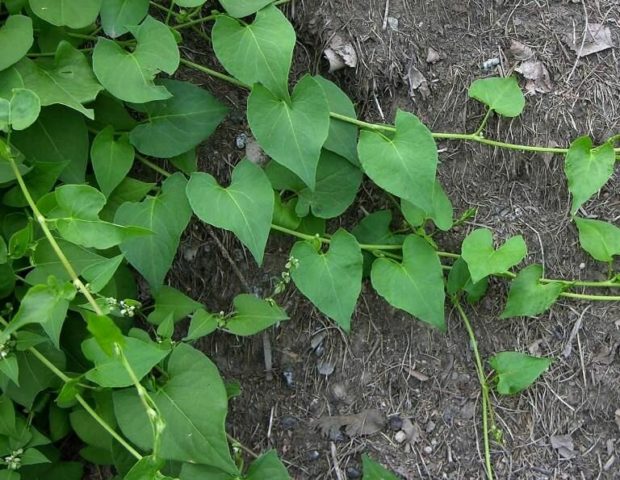
With liver inflammation
The therapy is carried out with fresh bindweed juice (two tablespoons), which is diluted with 200 ml of hot water. The tool is consumed three times a day, a quarter of a glass before meals.
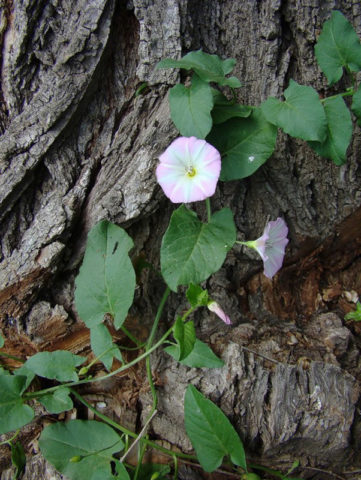
Contraindications
It should be remembered that almond herb is a poisonous plant. Self-medication is unacceptable. The use of toffee drugs is possible only after consulting a doctor.
Weed bindweed or birch has not only medicinal properties, but also contraindications. Bell-based remedies are not prescribed for pregnant women. Bitterness is characterized by abortive properties. The use of infusions and decoctions of almond herb can cause miscarriage and premature birth.
Among other contraindications to the use of funds made from bindweed, there are:
- lactation;
- children's age (up to 12 years old);
- chronic kidney pathology;
- hemorrhoids.
Collection and procurement
All parts of the birch differ in healing properties. However, they are collected at different periods:
- Roots... It is advisable to harvest it either in early spring or in autumn. The raw materials are washed, cut into small pieces.
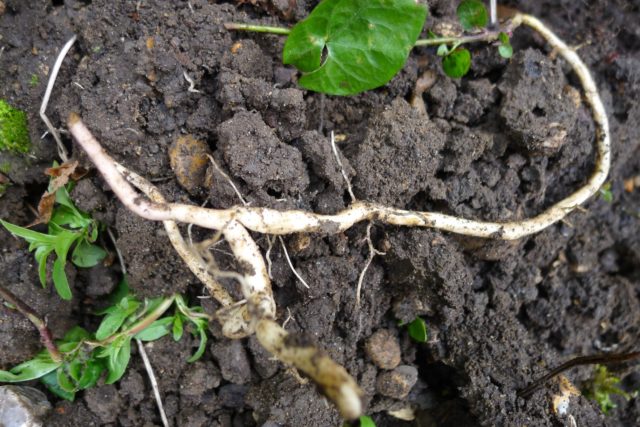 Experts recommend digging up bindweed roots in October to minimize the risk of collecting similar plants
Experts recommend digging up bindweed roots in October to minimize the risk of collecting similar plants - Stems, leaves, flowers. The raw materials are harvested from May to October. Foliage and stems are sorted out. It is important to remove darkened, dry and diseased specimens. Chop the stems and leaves of the bindweed.
 The aboveground part of the birch is harvested during flowering
The aboveground part of the birch is harvested during flowering
Dry parts of the plant in a well-ventilated place, after spreading them out on a clean cloth. Raw birch trees are laid out in a thin layer.
Storage of gourd blanks is carried out in glass containers or cotton bags for up to a year. After the specified time, the medicinal properties of the birch are lost. The use of almond grass in this case becomes ineffective.
Conclusion
The medicinal properties of the field bindweed are quite pronounced. They allow the use of perennial for the treatment and prevention of diseases of the digestive system, heart and blood vessels. Birch-based products are suitable for external use. It should be remembered that bindweed is classified as a poisonous plant. Self-medication with drugs from a gourd can lead to unwanted effects.

